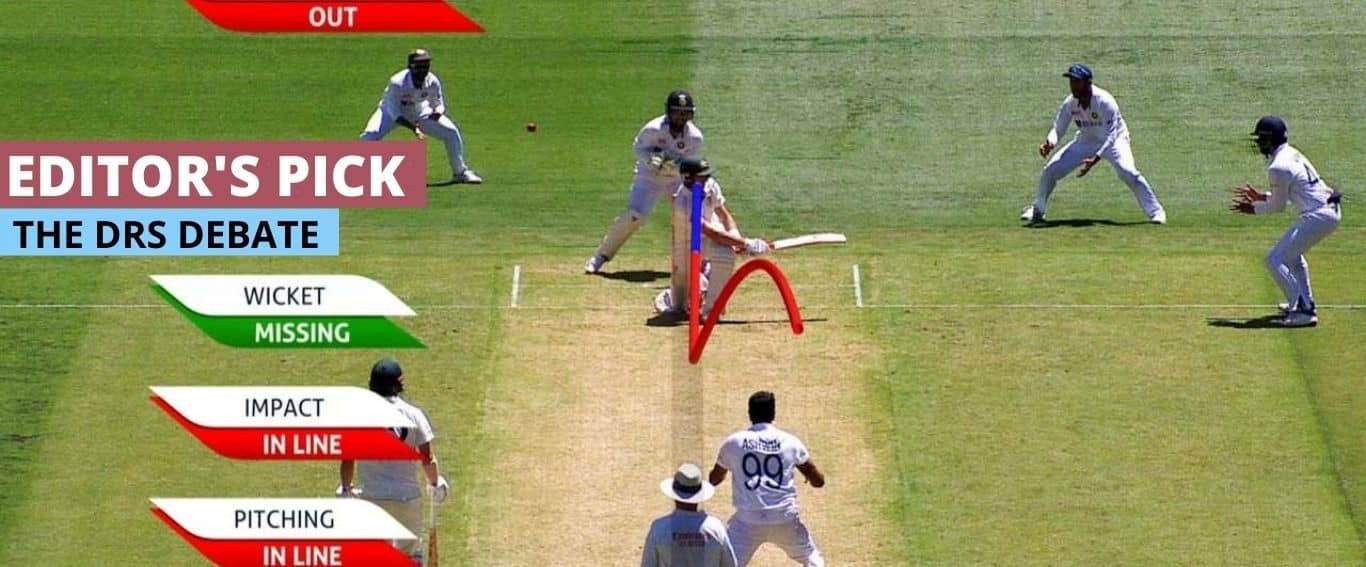Despite having a good success rate, DRS continues to spark controversy over few decision on a consistent basis.
India’s famous eight-wicket win in the Boxing-Day Test held at the Grandeur Melbourne Cricket Ground was marred by yet another controversial debate surrounding the Decision Review System (DRS). Former and current players from both nations expressed their frustrations over the erroneous umpiring flaws and technological blunders in DRS.
Consistent poor calls did raise doubts over umpires, but the technology used to correct these errors is also not completely fool proof. Some players also took on ICC’s criteria of umpire’s call after witnessing some decisions were overturned or not overturned courtesy of umpire’s call on various crucial moments in the context of the game.
The debate was first sparked in last month during the Big Bash game between the Melbourne Stars and Sydney Thunder. In the match, there was not one or two, but three decisions that could have been potentially overturned if the technology was available to the players. The discussion got heated when the former Australian wicket-keeper batsman Adam Gilchrist present in the commentary box during the game was pretty vocal about in favor of the system and the importance of it considering some big players fell prey to these errors.
Few days later the Boxing-Day Test between India and Australia also involved controversy surrounding DRS. In the match, countless decisions highlighted drawbacks of the current technology. The host skipper Tim Paine expressed his frustration over the DRS and its regulations as he dissected the reasons behind Australia’s eight-wicket loss in the Boxing Day Test against India at the Melbourne Cricket Ground.
In the second innings, Paine was initially given not-out by the umpire, but the decision was overturned as there was a spike seen in the snickometer. Paine was seen animated while walking back to the pavilion as hotspot didn’t show any evidence of ball hitting the bat. According to the batsman, the spike was the sound of his shoes rubbing the deck.
Paine said, “My dismissal in the second innings was extremely frustrating, no doubt about that. It was a crucial part of the game, I have felt that I have been playing well and I thought if I could get into partnership with other batter and add another 100-150 runs together then the whole game changes.”
During the game, Sachin Tendulkar also expressed his concern about DRS. He said, “The Decision Review System has been brought in for a reason by the ICC and if the system is being trusted by everyone, then the reliance on it has to be 100 percent.” According to the current ICC criteria, for the DRS occurring to overturn the LBW decision, an umpire’s decision can be overturned, if 50 percent of the ball is hitting the stumps.
The original Little Master backed his successor in the debate. During the Australian second inning, Steve Smith was bowled by Jasprit Bumrah. Smith is regarded as the hardest batsman to bowl in the Test matches. The batsman moves across in the offside in his stride, Bumrah outclassed the batsman by beating his leg stump. Smith’s dismissal become the talking point as Bumrah broke Smith’s long horizontal stride. In the dismissal, the ball first kissed Smith’s pads before taking his bails off.
Gavaskar while telling his point of view on the debate gave the example of Smith’s dismissal, he said, “I think the Steve Smith dismissal shows that even when the ball clips the stumps, its speed is so much that it can remove the bails. If you are appealing for leg-before wicket and if the ball is going to clip the stumps, the speed is such, even spinners that the bails will come off. If everything is given out, we could have really short matches.”
The debate on the DRS technology has never stopped since technology’s birth in January 2011. Many critics criticize ICC and remarks that if there is a technology, it should be used fully. According to the critics, there should nothing like 51 percent of the ball clipping the stumps or not.
On the other hand, many pundits take a separate stance by saying, one cannot take fully demand the technology and then what would be the use of the standing umpires. There are no flaws in the technology, but the implementation of the system needs to be rectified.
Umpires on the field should have some authority, so the umpire’s call is understandable. Giving the flak to technology and umpires makes no sense, so it would be better that ICC steps in and make some amends to the system to bring more clarity for viewers and players.

